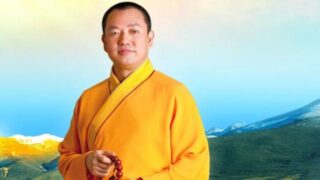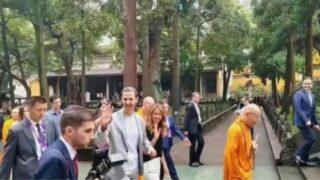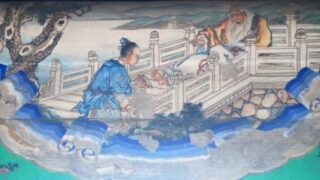The CCP is reaching new highs of “creativity” in crushing religious belief, by revamping statues of Buddha and Lao-Tzu to look like Chinese emperors and writers.
by Shen Xinran
China’s campaign to liquidate Buddhist and Taoist symbols has resulted in many ludicrous “creations” across the country after religious statues have been modified to eliminate their spiritual references. Despite ridicule at home and abroad, the statue makeover drive continues unabated.
In Weichang Manchu and Mongol autonomous county, administered by Chengde city in the northern province of Hebei, an Amitabha Buddha statue was recently altered to look like Kangxi Emperor (1654-1722), the fourth emperor of the Qing dynasty (1636-1912).


According to sources, the 12-meter-tall Amitabha Buddha statue, built outside a temple in 2005 with the funds raised by local believers, was popular with worshipers. But the local Religious Affairs Bureau ordered the person in charge of the temple to dismantle it, claiming that the directive came from the central government.
As heavy vehicles could not drive up the mountain to demolish the statue, the authorities decided to alter the Buddha statue, changing its appearance to look like Mao Zedong, Confucius, or Emperor Kangxi; any of the above, as long as it was not Buddha.
The person in charge had no choice but to hire workers to alter the statue. An emperor’s cap was put on the head of Buddha, a pigtail and beard were added to change the look.
However, officials were dissatisfied with the makeover and demanded further alterations since the hands and base of the statue were still “too Buddhist.”
Believers were shocked and confused with the “facelift,” not understanding what the end- result depicts: a Buddha or Emperor Kangxi.
“The CCP doesn’t allow outdoor Buddhist statues, for it is afraid that all people may worship the Buddha and abandon the Communist Party,” a local believer commented. He added that the government feels uneasy if people are worshipping Buddha, a long-standing tradition in China.
Not only Buddha statues are revamped: those of Lao-Tzu, the founder of Taoism, are also altered across China.
In July, residents of Gushan town, administered by Donggang city in the northeastern province of Liaoning, were surprised to see how the statue of Lao-Tzu outside Xuandu Temple in the Dagushan Scenic Area had been overhauled. A large bamboo hat was put on the philosopher’s head, and bamboo slips for writing in his left hand were replaced with an opened book.
According to sources, in September last year, officials from the city’s Religious Affairs Bureau sealed off Xuandu Temple, in an attempt to demolish the statue of Lao-Tzu, claiming that “it was unlicensed.” The person who provided funds for the statue managed to negotiate with the local government to preserve it. But on one condition: Lao Tzu had to be altered to look like Cao Xueqin (1715-1763), the author of Dream of the Red Chamber, considered one of the essential classical novels of Chinese literature.


Commenting on the reasons for this transformation, a local elderly Taoist told Bitter Winter that the government seeks to eliminate symbols of faith and reduce the influence of religions on the population. It is, therefore, forcing people to cease worshiping deities and paying tribute to religious figures and start revering traditional Chinese culture and literature instead.









